Creating the Karakuri
March 24, 2011 by lloyd
Karakuri ningyō are mechanized puppets or automata from Japan from the 18th century to 19th century. The word 'karakuri' means a "mechanical device to tease, trick, or take a person by surprise".
This is the first drawing we made to design this new troop.
-“It can not be the typical robotic Geisha” was the first directive received by Gutier, the background and stats creator.
The first sketches made in a notebook showed a robotic girl, but she's still too human and perhaps too feminine.
After those first sketches, all suggestions pointed towards a more dehumanized model, closer to a doll, a mannequin, devoid of life. The idea is it must be more disturbing and fearsome.
Idea for the “Forward Observer” device.
Now, there is not hair and less expressiveness in the face, the Karakuri is not attractive. However, those are risky decisions, from a marketing point of view.
Still too human.
We started to design an unusual body, compared with other Infinity miniatures. We want the miniature to suggest a robot and not an armoured human, so we chose to provide it with inhuman proportions and body voids.
A human figure with unnatural holes. This was the most recurrent and characteristic theme of the Karakuri.
The dehumanization process is very difficult, especially for an artist used to drawing people.
We enhanced the “doll without life” look by removing the mouth from the mask.
The design process advances in “proof and error” steps, using the frustrating process of rejected drawings and resubmitting, time and time again until the image is accepted.
This design was accepted as quasi-definitive, except some details. From here, we develop a backview that fits with the frontview.
Once the design is approved, we proceed to detail everything that is not shown in the general drawings: Inner pieces, articulations, concave shapes…
These tiny details are very difficult to see in a miniature and sometimes, some of them are lost due to the small scale.
“This head is going to break the mould.” This phrase is actually true. Our production moulds expert, Begoña Liste, has warned us that these shapes are troublesome to reproduce on a large scale.
The next step is to made a quick sketch as guide to the sculptor on the pose of the miniature. However, this is stll just a guide, we like the sculptor to have some freedom to choose the pose, but must always keep in mind the miniatures profile.
The last step of the design process is to choose the colour scheme. With the Karakuri, we stayed close to Yu Jing’s Nipponese Sectorial Army colour scheme.
And this is the concept dossier, which our sculptors and artists receive in order to begin their work.
This is the final result of all the process: the miniature.
Thanks to you all. I hope you enjoyed this step by step insight into the design process.
Carlos "Bostria" Llauger
Carlos frequents the Beasts of War website as @bostria
































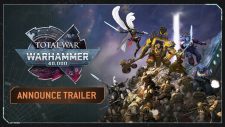
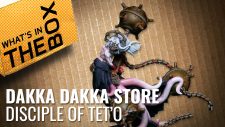
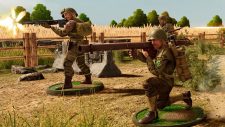
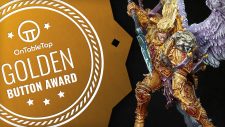
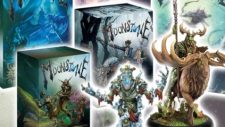
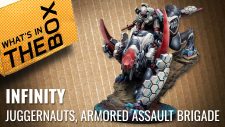


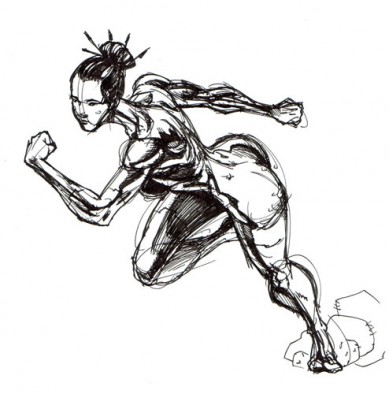
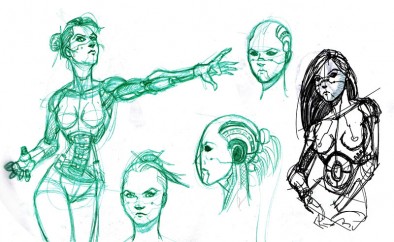
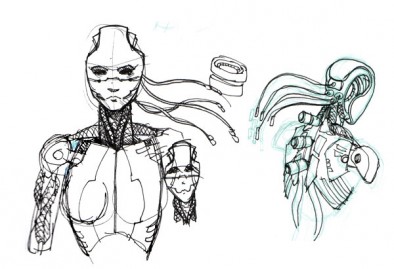
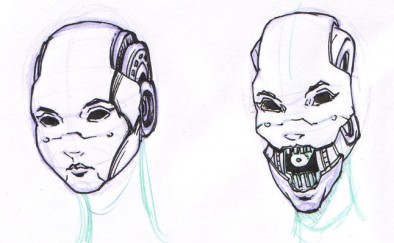
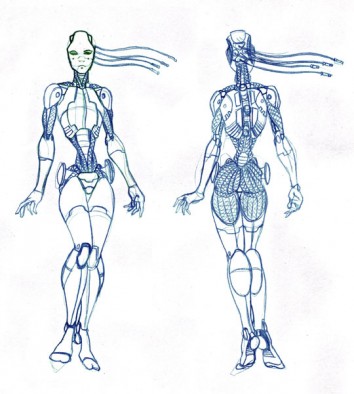
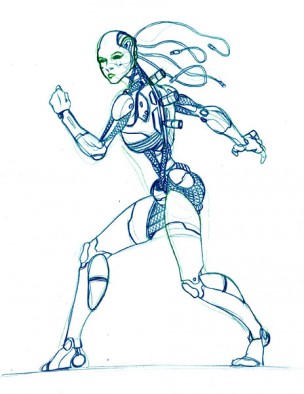
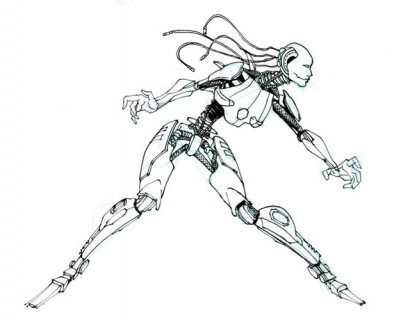
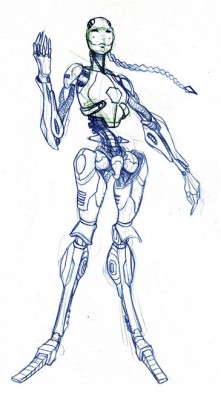
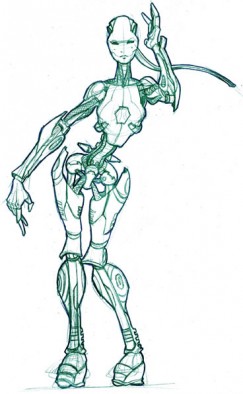

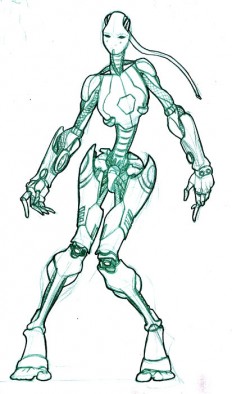
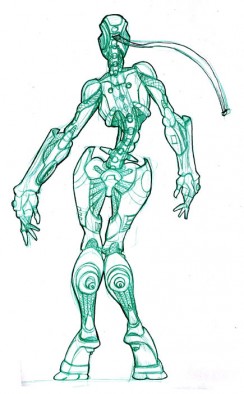
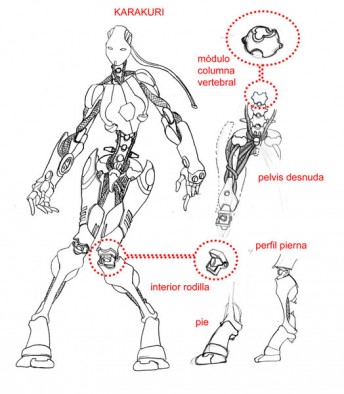
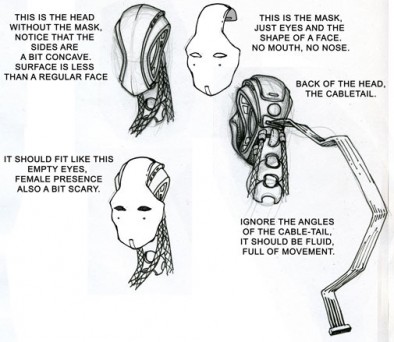
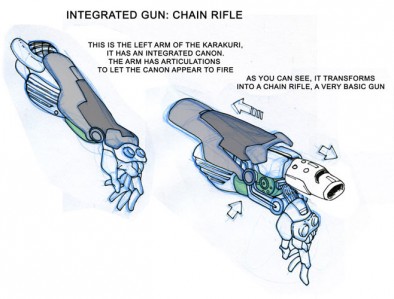
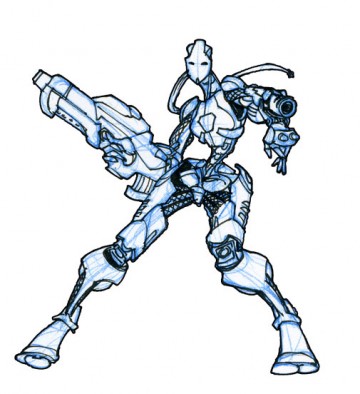
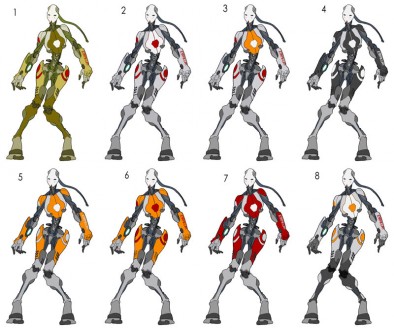

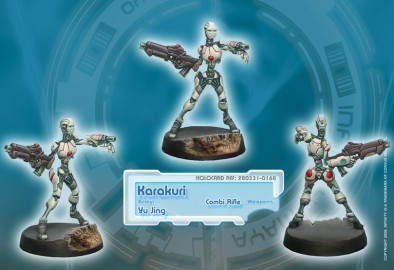













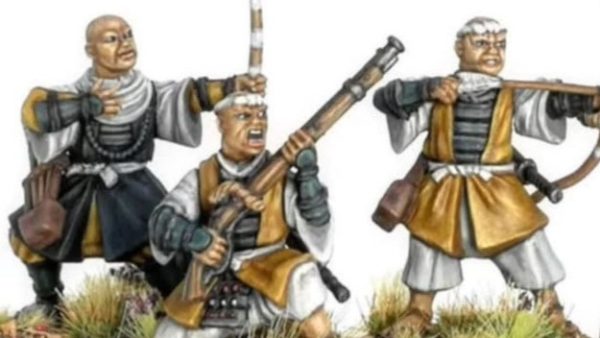
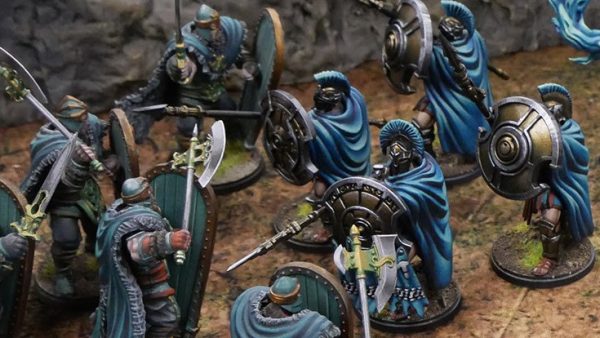
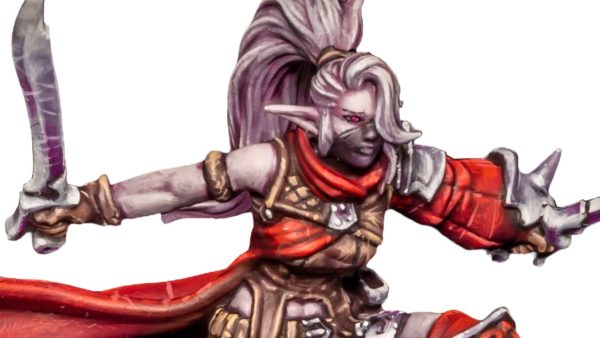
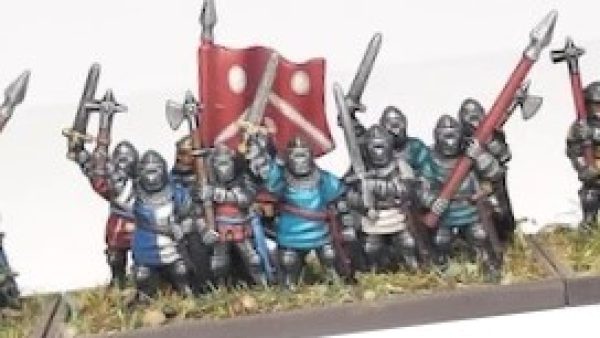
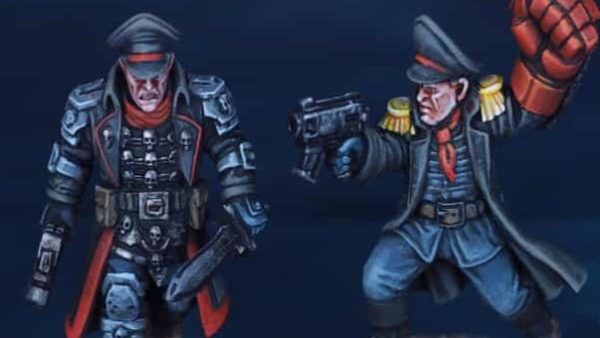



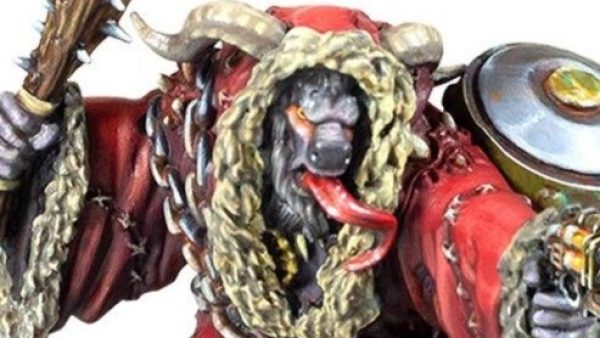
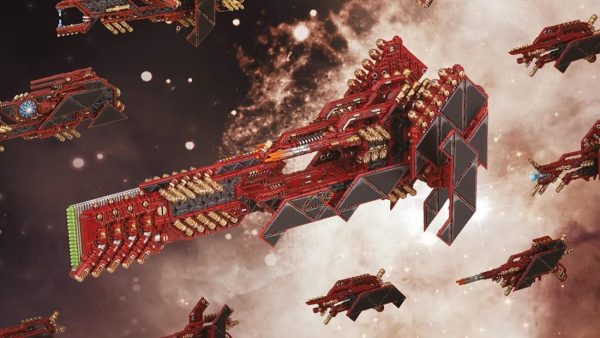


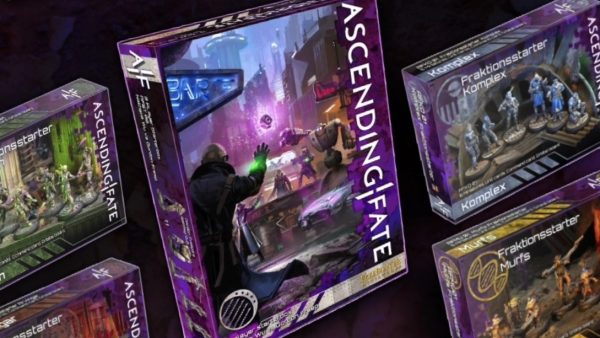
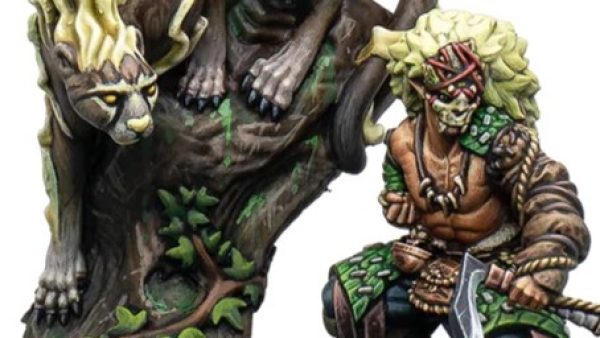
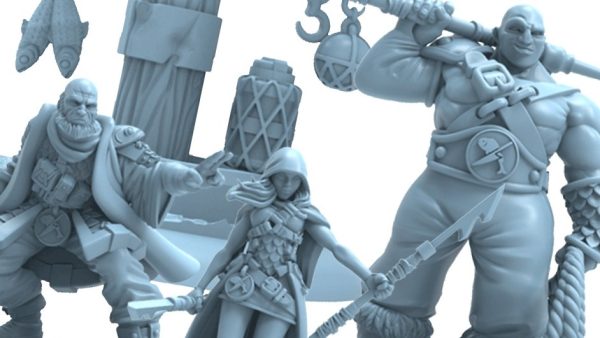
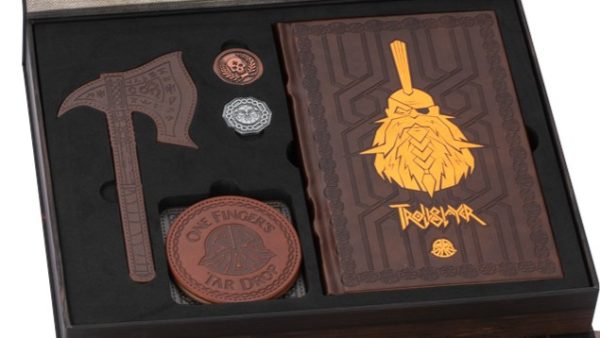
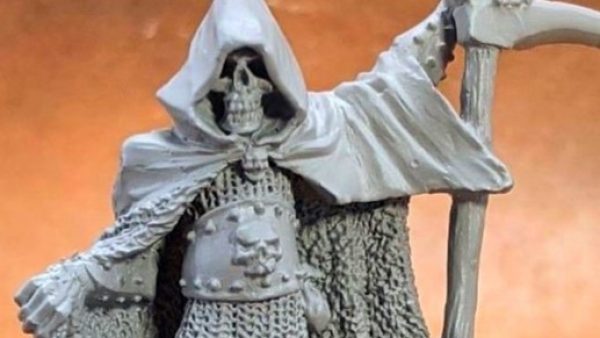
Gorgeous mini, as always !
Ive always loved this mini. hoping to get into a JSA soon. The design art is realy nice
That’s a huge amount of conceptual work! is that a typical level for new models or did the Karakuri require more than usual?
It probably is about the average, they do.
The decision to have a “mould braking” model instead of compromising the design shows an unusual dedication in quality and it is evident in other models too.
VERY COOL! I absolutely love the look of INfinITy! Any of this behinds the scenes art is always a real treat, but even more so with such quality art as INfiniTy puts out… all the work behind the scenes really shows through in the final works! Thanks again BoW!
Its really nice to see the design process that has gone into some of the mini’s in the Infinity range, especially two of my favourite mini’s the Karakuri and of course the Oniwaban. I really think Corvus Belli should consider releasing a concept art book for the Infinity range as I find the work that goes into the production of these models fascinating and really inspiring. Gives you as a gamer and painter a greater understanding and respect for the product you ultimately hold in your hand. Thanks BoW and CB for these articles.
I put it in my avatar for reason……